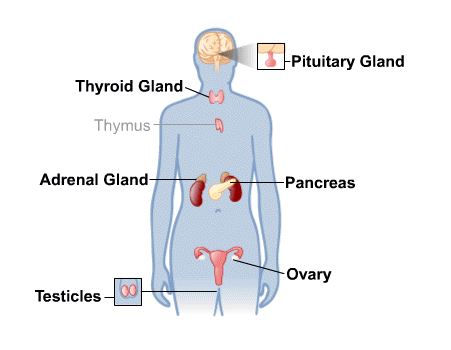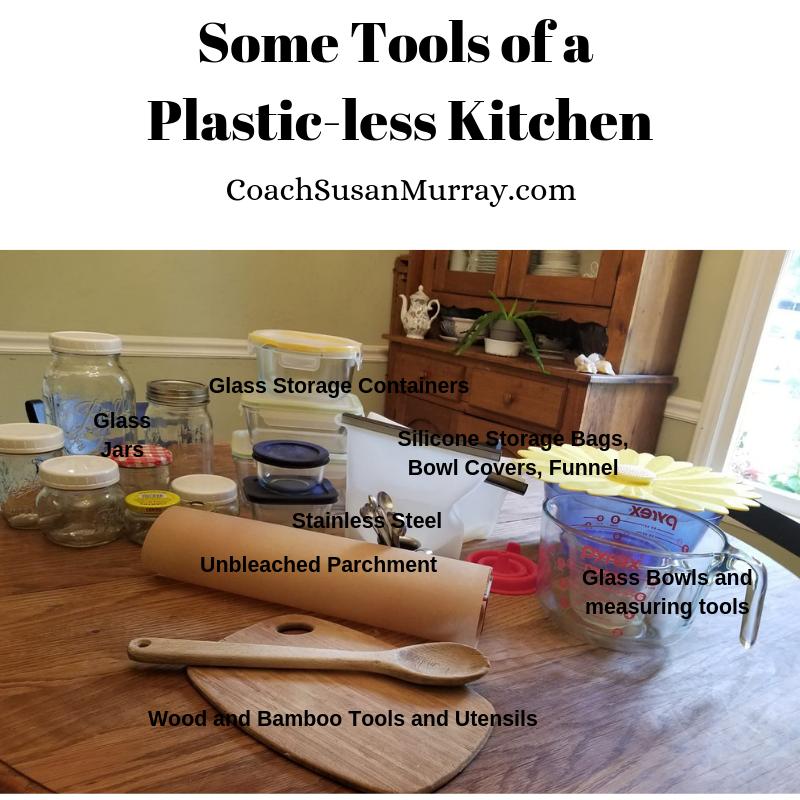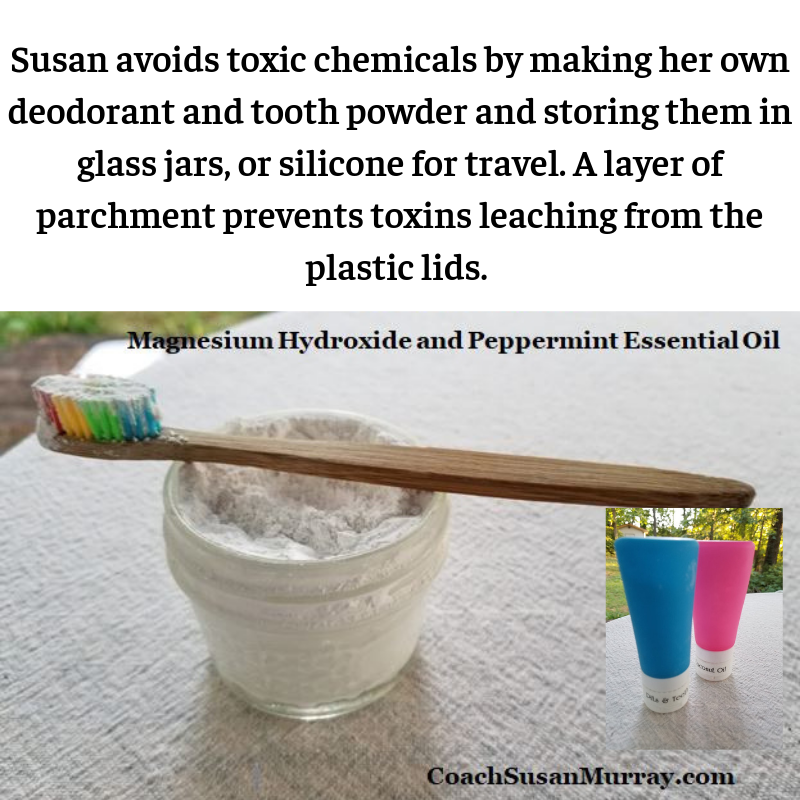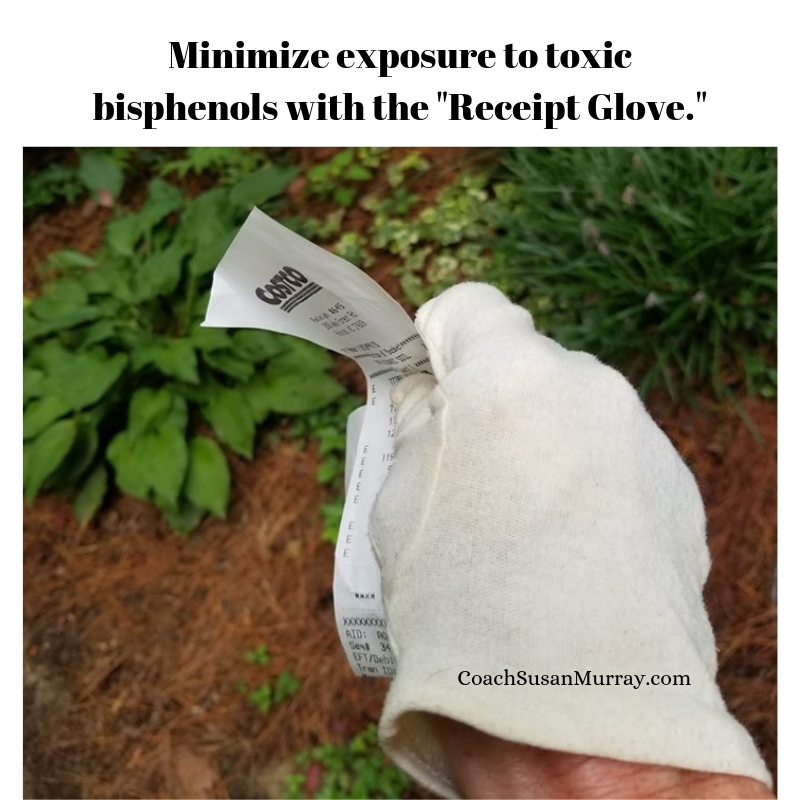How to Reduce Your Toxin Exposure from Plastics, and Why You’d Want To
- Susan Murray
- Aug 27, 2019
- 6 min read
Updated: Mar 20, 2020
Ready to grow ageless? Book your free 15 minute
Turn Back Time call today!
How to Reduce Your Toxin Exposure from Plastics, and Why You’d Want To
Ever since John Wesley Hyatt invented the first synthetic polymer in 1869, humans have loved plastic. The promise of cheap, convenient durability remains too seductive to pass up.
150 years later we struggle with the fallout of humanity’s love affair with plastic: plastics and the toxins they leach have a negative impact on the health of our planet as well as on the health of humans.
Of major concern to human health are plastic chemicals that fall under the category of Endocrine Disruptors.
Endocrine Disrupting Chemicals (EDCs)
are found not only in plastics, but in paper receipts,
ingredients in commercial personal care and household cleaning products,
and in plants such as soy.
This article addresses EDCs found in plastics and shares some
tips for reducing exposure from plastics.
Quickie Tutorial on the Endocrine System:

The endocrine system, a collection of glands each of which is responsible for producing one or more hormones that are released into the circulatory system, regulates growth, metabolism, and sexual function.
Every organ in the body relies on specific hormones in specific amounts in order to function optimally. When those hormones and their signals are interrupted, chaos ensues resulting in autoimmune disorders, reproductive disorders, metabolic diseases such as diabetes and thyroid disease, and cancers.
Who is Most at Risk?
While fetuses and young children are at the greatest risk of developing health challenges later in life as a result of EDCs, those of us in our “advanced years” are also at risk and are well-served to take whatever steps we can to mitigate our exposure from plastics.[i] This is especially true for those of us already dealing with diabetes, autoimmune dysfunction, thyroid disorders, and diminished neurological function.[ii]
And for those of you reading this who have grandchildren, you might save your grand-babies from a lifetime plagued by metabolic disorders by sharing this info with their parents.
How Endocrine Disrupting Chemicals Wreak Havoc:
EDCs interfere with the healthy functioning of our endocrine systems by mimicking, or partially mimicking the hormones our bodies naturally produce.
The most well-known EDC found in plastics is Bisphenol A (BPA), which was banned from baby bottles and teething toys several years ago. Many manufacturers now advertise their products as “BPA-Free”.
What they aren’t telling you is that they’ve replaced BPA with Bisphenol S and Bisphenol F, both of which share the same structural analogues as BPA and have been found to have the same perilous effects on the endocrine system.
Plastic is ubiquitous; there is no way to eliminate it from our lives, but there are things we can do to reduce our exposure.
These are a few ways to help reduce your exposure to plastic toxins.

Refer to this graphic when purchasing plastic products or foods in plastic packaging. To prevent making yourself crazy, aim for lower exposure rather than zero exposure!
The list below is intended to shed light on where plastic exposure is prevalent, and some alternatives to consider.
Don't drive yourself crazy with this! Do what you can, as you can, and don't sweat the rest!
Purging Plastic from the Kitchen
I started the purge process in 2005. It took a couple years to completely replace my plastic containers. During that time, I began utilizing hacks such as lining plastic containers with unbleached parchment paper to prevent food from contacting the plastic. My glass canning jars (which freeze well if smaller than the ½ gallon size) are a perennial favorite. I've also invested in glass containers with locking plastic lids.
More recently, I’ve added food-grade silicone zip-top bags to my collection.
Because the lids of canning jars and glass containers contain BPA, BPS, or BPF, I always place parchment between the contents of the jar and the lid for an extra measure of safety.
Beware of reusable plastic dinner and kitchenware, including melamine, as well as disposable plastic and polystyrene (aka Styrofoam) dinnerware and utensils.
Instead, opt for stainless steel, glass, ceramic, wood, or silicone.
Bamboo dinnerware, kitchenware, and utensils can be a nice option as long as melamine (or other plastics) have not been used as a binder. When in doubt, read the labels, contact manufacturers or distributors, or leave it behind.

It’s a Wrap:
I rarely use plastic wrap. When I do, I wrap food in parchment before wrapping in plastic.
Two alternatives to plastic wrap which I have yet to invest in are beeswax-infused organic fabric wraps, and stretchy silicone bowl covers.
Stop Microwaving Plastics:
According to the National Institute of Environmental Health Sciences, when microwaved or exposed to other sources of high heat, plastic food containers and dishes break down, allowing BPA, BPS, BPF, and other toxic chemicals to leach into your food.[iii]
If you use a microwave, transfer food into microwave-safe glass or ceramic dishes before heating. When using plastic storage containers, allow food to cool before transferring.
Filter water at home:
And use glass, stainless steel, or in a pinch, silicone water bottles. If you use a thermos, opt for an entirely stainless-steel option. Many thermoses claim to be free of plastic but use plastic on the outside of the container.
Mind the Food Packaging:
Admittedly, this is a tricky one: we often can't control how our food is packaged at the time it is purchased. Still, when you're able, here are some options:
Purchase fresh eggs in cardboard cartons rather than polystyrene. Purchase fresh meat and cheese wrapped in waxed butcher paper instead of plastic and foam. Purchase fresh milk in bottles rather than plastic-coated cartons or jugs.
Avoid canned foods and beverages: Of greatest concern with canned foods are acidic foods such as tomatoes, and fatty foods such as milk; fats and acids cause chemicals to leach in greater amounts. Opt for tomato and other acidic products in glass jars, bottles, or tetrapaks.
BYOC: Bring Your Own non-plastic Containers to restaurants for left-overs, and take them to grocery stores to use when purchasing bulk items (have cashier give you the tare weight before filling). Reusable cotton mesh produce bags further reduce plastic waste and exposure.
Beyond the Kitchen

Make Your Own household cleaning supplies and personal care products:
Not only do you get to customize the ingredients to avoid toxins, but you can store your DIY products in non-plastic containers. Even "organic" commercial products typically come in plastic, which leaches toxic chemicals into that pricey product. Check out my recipes for toxin-free Dish Liquid, Laundry Detergent and Fabric Softener, and Personal Care Products.

Skip the Receipts:
Simply touching a receipt causes the skin to absorb Bisphenols. Opt out of receipts at the gas station and ATM machine by pressing "No." Request email receipts, and ask the cashier to dispose of the paper receipt for you. If you have no other choice but to handle a receipt, you can channel your inner King of Pop and wear one cotton glove to handle your receipt. Nitrile rubber gloves and finger cots are a disposable alternative. And if you work as a cashier, I strongly suggest wearing gloves while you work to reduce your toxic burden from receipts.
A Word About Dental Plastics:
Personally, I don't sweat the small stuff, such as the plastic in my toothbrush. There are bamboo and other "sustainable" toothbrushes on the market should you wish to explore them. I tried a bamboo toothbrush with nylon bristles, but wasn't thrilled with it. For now, I'm sticking with the standard brush heads that fit my electric toothbrush.
Otherwise, you can request your dentist use Bisphenol-free dental sealants and composite fillings if possible. If this is not possible, take comfort that a recent study has suggested that while initial levels of bisphenols are elevated following a procedure, salivary levels of BPA appear to drop to nearly 0 after one week following application of dental sealants and composite fillings.[iv]
Final thoughts:
Doing what it takes to reduce plastic toxins may feel insurmountable at times.
Keep the Purge Process slow and deliberate, making changes as you are able.
Whatever you do, avoid stressing out over your plastic toxin exposure; take comfort that it is impossible to eliminate toxin exposure from plastics, but reducing even by a tiny bit can have a profound benefit on your health and planet.
If you'd like help creating healthy lifestyle habits (and making them stick!), I'm here for you! Schedule your free 15 minute Turn Back Time Session today. I can help you set wellness and functional aging goals and Stick To Them!
Wishing you well,
Susan
[i] https://www.ncbi.nlm.nih.gov/pmc/articles/PMC6028148/
[ii] https://www.ncbi.nlm.nih.gov/pmc/articles/PMC3090512/
[iii] https://www.niehs.nih.gov/health/topics/agents/sya-bpa/index.cfm
[iv] https://www.sciencedirect.com/science/article/pii/S0045653516318665




Comments